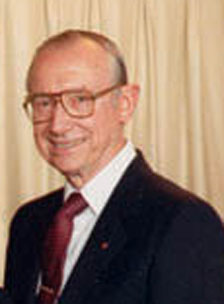William Zukel, MD
Born: 1922

Bill Zukel was educated at Massachusetts State, Hahnemann, Harvard, and at the London School of Hygiene and Tropical Medicine. He was soon plunged into epidemiology and public health by USPHS assignment in 1947 to the Newton Heart Study, the intervention sister program to Framingham. Early serving in the young Public Health Service Heart Disease Control Program, he was supported to return to Harvard and Albany for specialty training in cardiology and then returned to government service at the National Heart Institute where he spent most of his career.
With his cardiological experience, Zukel became a major up-front and behind the scenes stimulus, planner, and guide to NIH research in the field. He wrote one of the first studies of geographic variation in CVD deaths in the United States and went on to work closely with James Watt in developing the broad research plan of the new National Heart Institute. Eventually he oversaw most of the collaborative prevention trials, from the Coronary Drug Project (CDP) through the Multiple Risk Factor Trial. His firm hand was felt in methodological rigor, study design, data monitoring, and quality control of all major NIH-supported prevention studies. It is reported that, following the CDP experience of an investigator-controlled trial, Zukel determined a policy, increasingly applied over the years, that “Bethesda Central,” that is, the Institute, would subsequently be more closely involved in design and direct management and interpretation of all large NIH-sponsored epidemiological undertakings, they being too important and costly, like wars, “to be left to the generals alone.”
Zukel was at the center of negotiations for continuing the Framingham Study when it was under intense pressure from NIH leaders to close down in the 1970s. Throughout his career he represented that coterie of knowledgeable and committed administrators who acted quietly and effectively to elevate and propagate preventive research strategies and to fight the ongoing battles for balanced programs and support with clinical and bench science at NIH. In these roles he was among the more influential in all prevention developments during the first three decades of formal CVD epidemiology. (HB)
Sources
Oral history with Milton Nichaman, November 17, 2001.